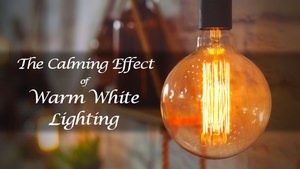Are LEDs blue? Is the cost not worth the hype? We're going to dispel some of these common myths about LEDs.

While the lighting industry has gone through many changes over the decades since its inception, perhaps one of the most exciting yet controversial advances has been in the discovery of the LED. As technology has progressed, the LED has only become more popular and widespread as its numerous uses and capabilities have developed.
Many however have resisted this change in the lighting industry; some with valid doubts and others with not as well-founded concerns. Halogen/Incandescent light bulbs have been well loved and widely used since their invention. This leads many to be distrustful of change when everything is already working "fine", right?
Well, it is true that halogen lighting has great uses. However, there are drawbacks such as low energy efficiency, short lifespans, and unwanted heat generated from wasted power. If this is the case, what does LED offer that solves the issues incandescent users have run into over the years? Today we will dive into what an LED is and 5 common myths surrounding them.

What is an LED?
LED stands for Light Emitting Diode. It is a semiconductor that generates energy and light through the connection of electrons and holes on N-type and P-type semiconductors. This process naturally creates light directly from the energy made from the two different semiconductors.
Basically, it's a little computer that makes light. :)
This kind of light has far greater energy efficiency because it converts energy to light more quickly and with less steps than an incandescent which first generates heat from the energy before that heat is converted to light.
LED is considered solid state lighting which in many cases means it is more durable and can withstand vibration and temperature changes with less difficulty. Sometimes, these diodes are even directly visible on the bulb itself.
Now that we know what an LED is, we can discuss some honest misconceptions about them.
5 Common LED Myths
Myth 1: LEDs Only Produce Blue/White Light
Perhaps one of the most popular misunderstandings of LED lighting is that they have little or no color temperature variance. However, LEDs have an even LARGER range of temperature (compared to traditional incandescent lamps), starting around 1,900K and making its way up to 6,500K.
Measured on the Kelvin scale, color temperature describes the warmth or coolness of a light. The lower the number the warmer the color of the light will be. Conversely, the higher the number, the cooler the light.
Most incandescent light bulbs measure anywhere from 2,700K-3,000K - so, thankfully, there are thousands of LED bulbs in this range as well to accurately emulate the traditional warm tones we've all grown to love.
To learn more about color temperature, see here.
Myth 2: LEDs Cannot Handle Vibration
As mentioned previously, an LED is considered solid state lighting. This means it is more durable and resistant to changes in its environment.
There are certain incandescent lights that have a rough surface or Teflon coating that helps prevent any disruption in light when shaking occurs. Many are used to seeing a different category of lights solely made to be vibration resistant. LEDs however, do not have this subgroup… because they do not need it.
Unlike an incandescent, which has delicate filaments that are easily broken, a standard LED does not have a filament but instead a tough diode that resists vibration. Knowing what an LED is will help relieve doubts by want-to-be buyers who are nervous about their vibration resistance.

Myth 3: LEDs Have Low Light Quality
Light quality can be measured by the CRI of a light. CRI stands for Color Rendering Index. The higher the number the closer the light will be to rendering the true color of the object.
Incandescent lights have a CRI close to 100 which is amazing. This leads many to naturally doubt that an LED could beat or at least match that high score.
A good CRI is generally thought to be in the 80s. An excellent, near perfect CRI falls in the 90s on that index.
Many if not most LEDs fall in those two ranges depending on the type, use, and manufacturer. They boast CRIs in the 80s and low 90s making them a close competitor of incandescent on the color rendering scale.
Myth 4: LEDs Never Heat Up
This is a common and understandable assumption when considering the way in which light is created via an LED. It is also true that, compared to incandescent lights and especially heat lamps, LEDs emit low heat.
Even so, there is some heat generated by the creation of light in an LED. Most of this heat is stored in the base of the bulb. However, there may still be slightly warm-to-the-touch places on certain lights.
LEDs continue to be an excellent replacement option without losing favored features of your older lights.

Myth 5: The Cost of An LED Is Not Worth the Hype
If the above reasons have not convinced you of the creditability of LEDs, then I have just a few more reasons for you. :)
Because LEDs turn energy directly into light and can do so with less energy used, they require less power to operate. A standard A19 LED bulb that uses 8 watts is equivalent in brightness to an incandescent bulb that requires 60 watts.
Additionally, they are known to last longer than Halogen lighting. For certain incandescent bulbs, the average lifetime is 2-4,000 hours. In comparison the LED counterpart will ordinarily last 15-25,000 hours with a few reaching 40,000 hours.
Countless LEDs even look very similar to the beloved incandescent versions. If you love your antique filament halogen but would appreciate the benefit of longer lasting lighting there are numerous options to choose from.
The light quality, color temperature, and durability all demonstrate that LEDs are worth their price. Over time, the average buyer will save LOTS of money when purchasing LEDs.
Conclusion
When considering the switch to LED, keep in mind the favorite, essential qualities of your current lighting. LED may be able to offer everything you need at a higher value that will help you save money overall.






